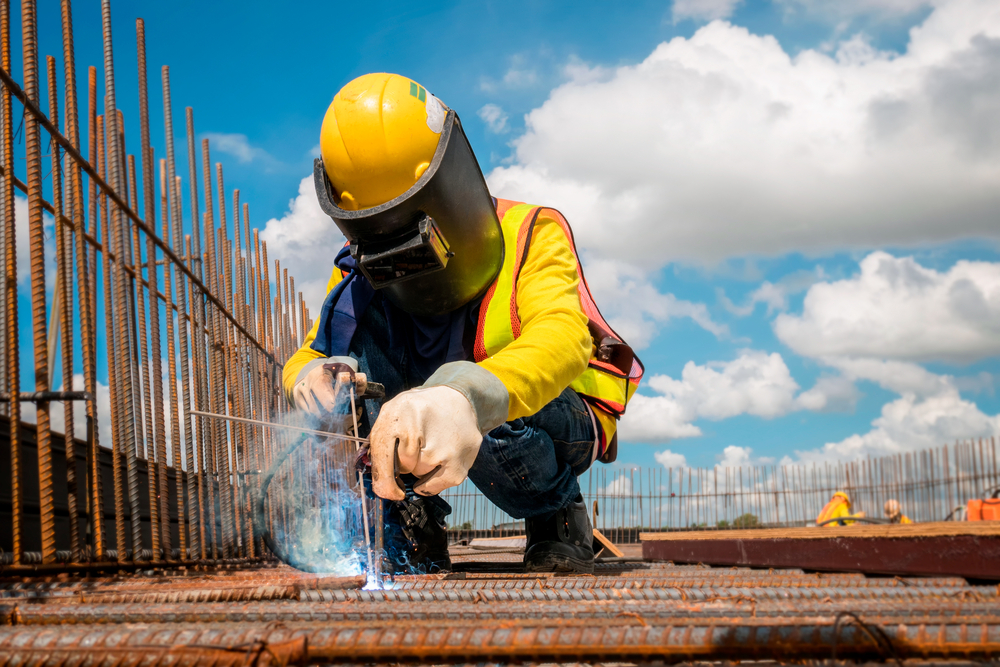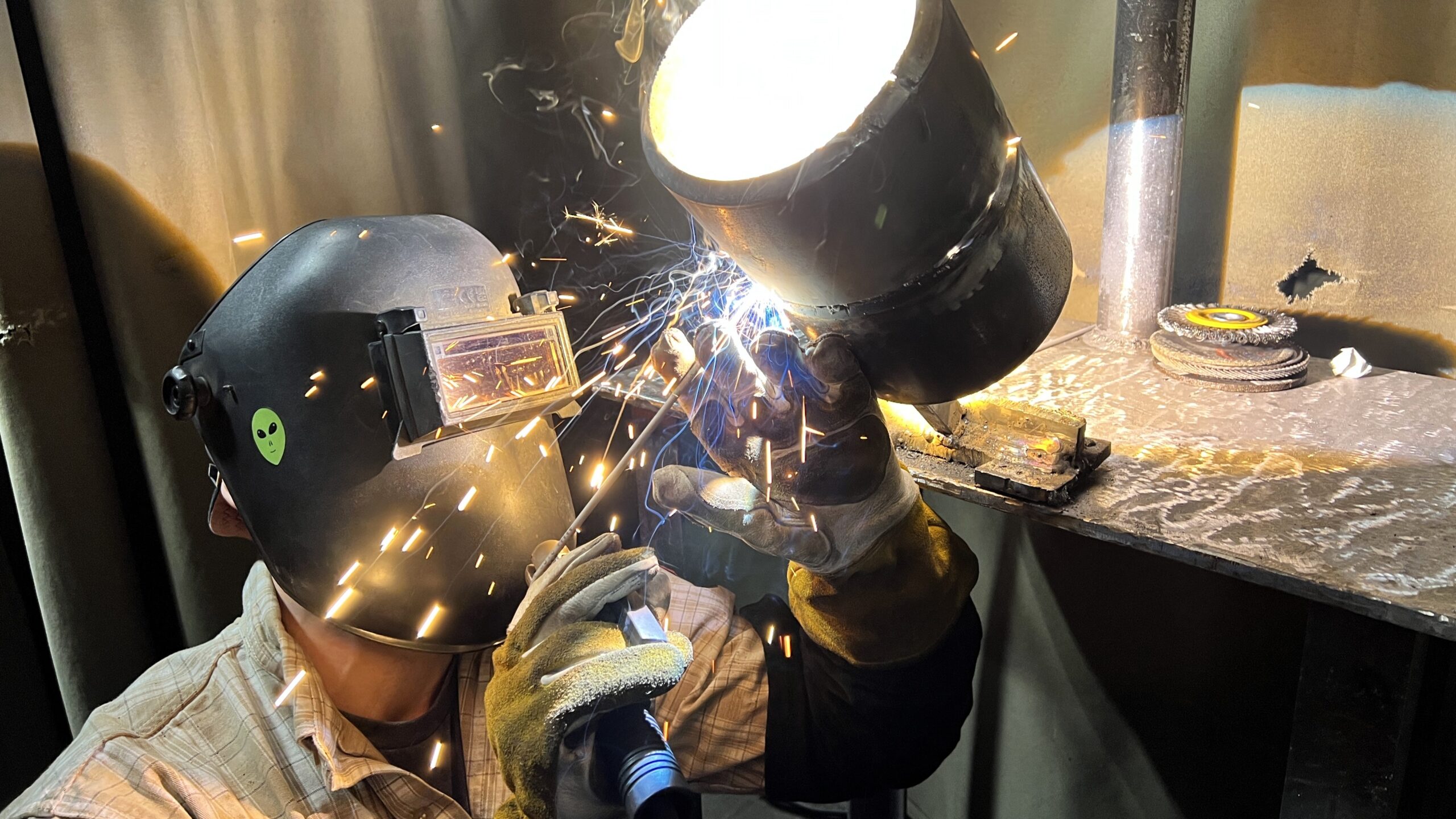All Regarding Welding: Key Insights Into Techniques and Finest Practices for Success
Welding encompasses a variety of methods, each matched for specific materials and applications. Comprehending these approaches, such as GMAW, SMAW, and TIG, is vital for attaining suitable outcomes. Additionally, the appropriate equipment and safety and security methods can not be ignored. As prep work and troubleshooting play essential duties in the welding process, understanding these aspects can significantly improve the top quality of the end product. What are the vital factors that ensure a successful weld?
Recognizing Various Welding Strategies
Welding methods encompass a selection of methods, each fit to certain applications and products. Among the most usual techniques are Gas Metal Arc Welding (GMAW), Secured Steel Arc Welding (SMAW), and Tungsten Inert Gas Welding (TIG) GMAW, additionally recognized as MIG welding, is preferred for its rate and adaptability, making it suitable for slim products. SMAW, or stick welding, is favored for its simplicity and performance in outside environments, specifically with thicker steels. TIG welding uses precision and control, making it appropriate for intricate work and non-ferrous steels (Welding). Each method has its special benefits and factors to consider, allowing welders to select the very best approach based on the task's needs, material kind, and wanted end results. Comprehending these techniques is necessary for effective welding
Important Welding Equipment and Devices
While numerous welding strategies require particular skills, the ideal equipment and tools are equally necessary for accomplishing quality results. Necessary welding devices consists of welding equipments, which vary depending upon the strategy-- such as MIG, TIG, or stick welding. Protective equipment, consisting of handwear covers, helmets, and aprons, warranties safety and comfort throughout the process. Furthermore, fixtures and clamps assist safeguard products in position, making sure accuracy in welds. Consumables like welding poles, cable, and protecting gas are also crucial parts that influence the high quality of the weld. Devices such as mills and cutters help with surface area preparation and post-weld finishing, contributing to a professional outcome. Purchasing high-quality tools inevitably boosts the efficiency and effectiveness of welding projects.
Safety And Security Practices in Welding
Proper security methods are essential in the welding market to safeguard workers from potential dangers. Welders need to wear suitable personal safety equipment (PPE), consisting of headgears with proper shading, handwear covers, and flame-resistant garments. Sufficient ventilation is essential to decrease exposure to harmful fumes and gases generated throughout the welding process. Furthermore, employees must be learnt the correct handling of welding equipment to avoid mishaps. Fire safety and security actions, such as maintaining flammable products away from the welding area and having fire extinguishers conveniently available, are necessary. Normal evaluations of devices and work areas can assist determine prospective dangers before they bring about mishaps. By adhering to these safety and security techniques, welders can create a safer working atmosphere and lessen threats connected with their trade.
Readying Materials for Welding
Preparing products for welding is a crucial action that greatly affects the high quality and honesty of the last item (Montana Mobile Welding and Repair Belgrade Welding). Proper preparation includes cleaning up the surfaces to remove contaminants such as rust, oil, and dust, which can compromise the weld. Techniques such as grinding, fining sand, or utilizing solvents are frequently utilized to achieve a tidy surface. In addition, making certain that the products mesh comfortably is crucial; voids can bring about weak welds. It's also essential to take into consideration the placement and positioning of the elements, as this will certainly impact the convenience of welding and the last outcome. Selecting the ideal filler product and ensuring compatibility with the base metals is crucial for attaining strong, resilient welds.
Tips for Achieving High-Quality Welds
Attaining premium welds requires attention to detail and adherence to finest practices throughout the welding process. Correct joint prep work is crucial, ensuring surface areas are totally free and tidy from contaminants. Selecting the appropriate filler material and welding strategy based upon the base steels is critical for suitable bonding. Preserving regular travel rate and angle while welding can promote and avoid problems uniformity. In addition, managing warm input is vital; too much heat can cause bending and weakened joints. Regularly checking the welds throughout the procedure allows for instant adjustments if essential. Utilizing proper post-weld treatments, such as cleansing and stress and anxiety relief, can improve the longevity and honesty of the weld, inevitably ensuring an effective end result.
Fixing Typical Welding Issues
Welding commonly offers obstacles that can affect the quality and honesty of the last item. Common issues such as porosity, irregular weld grains, and overheating can occur, each needing details troubleshooting welding and metal fabrication strategies. Understanding these problems is essential for welders to improve their skills and attain suitable outcomes.
Porosity Troubles Clarified
Porosity can commonly be neglected, it remains an essential issue in welding that can compromise the integrity of a finished item. Porosity refers to the existence of small gas pockets within the weld grain, which can deteriorate the joint and lead to premature failing. This trouble usually emerges from impurities, dampness, or improper protecting gas coverage throughout the welding procedure. To alleviate porosity, welders ought to confirm that the base products are completely dry and tidy, use ideal securing gases, and keep regular welding criteria. Frequently checking the devices and setting can also help recognize prospective issues prior to they show up in the weld. Addressing porosity effectively is crucial for achieving solid, long lasting welds that meet quality standards.

Irregular Weld Beans
Irregular weld grains can significantly impact the high quality and stamina of an ended up item. Various aspects add to this check here concern, including improper traveling rate, incorrect amperage settings, and irregular electrode angles. When the welder relocates also rapidly, a grain may show up slim and do not have infiltration, while moving also gradually can create too much build-up. In addition, making use of the incorrect amperage can cause either damaging or excessive spatter, both of which concession weld stability. The welder's method, such as irregular lantern activity, can also lead to irregular grain appearance. To minimize these troubles, welders need to concentrate on preserving consistent, regulated movements and making sure proper tools setups to attain uniformity in their welds. Uniformity is vital to achieving trustworthy and strong welds.
Getting Too Hot and Warping Issues
Excessive warmth throughout the welding process can cause substantial overheating and deforming concerns, impacting the architectural stability of the workpiece. These problems commonly materialize as distortion, which can jeopardize alignment and fit-up, making further assembly challenging. Factors adding to overheating include the selection of welding specifications, such as voltage and travel speed, along with the sort of product being bonded. To minimize these issues, welders need to maintain regular travel rate and proper warm input while monitoring the work surface temperature. In addition, pre-heating or post-weld warm therapy can help minimize tensions triggered by quick air conditioning - Montana Mobile Welding and Repair Belgrade Welding. Routine inspection and adherence to best practices are necessary in stopping getting too hot and ensuring the longevity and integrity of bonded structures
Regularly Asked Inquiries
What Are the Profession Opportunities in the Welding Industry?
The welding market supplies varied job possibilities, consisting of positions as welders, educators, designers, and examiners. Experts can work in production, construction, aerospace, and automotive industries, taking advantage of solid need and competitive incomes in numerous duties.
How Can I Improve My Welding Rate Without Giving Up Quality?
To enhance welding rate without giving up high quality, one should exercise efficient methods, keep equipment, maximize setups, and enhance hand-eye coordination. Routine training and seeking feedback can also substantially contribute to accomplishing quicker, top quality welds.
What Accreditations Are Readily Available for Welders?
Countless qualifications exist for welders, consisting of those from the American Welding Culture (AWS), the National Facility for Building Education And Learning and Research (NCCER), and numerous industry-specific organizations. These credentials boost employability and demonstrate ability proficiency.
How Does Welding Influence the Qualities of Metals?
Welding influences the residential or commercial properties of steels by altering their microstructure, which can result in modifications in solidity, ductility, and stamina. Heat input and cooling rates during the process greatly impact these product characteristics.
Can I Weld Dissimilar Metals With Each Other?
